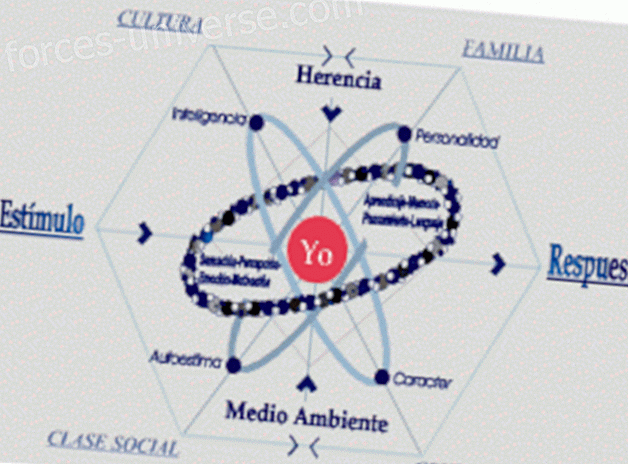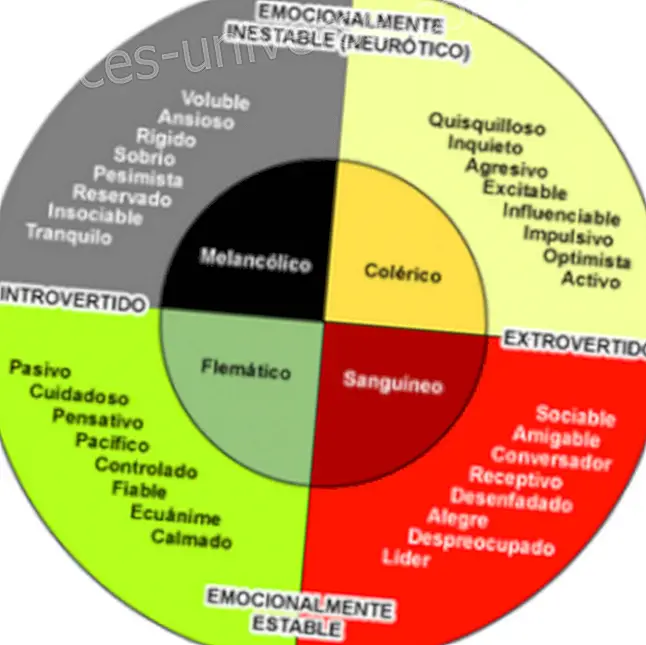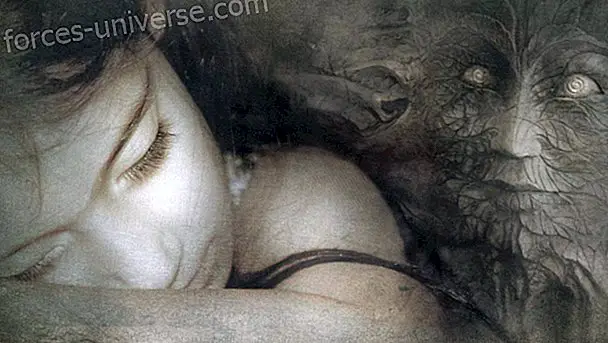 “Therapists is his real name,
“Therapists is his real name,
first of all because the therapeutic they profess
It is superior to the one in force in our cities:
it only watches over the bodies, while
the other candle also for souls ”
Alexandrian Reef
A therapist is a seeker of good and a healer of evil. The therapist is governed by the motto that "prevention is better than cure." Prevention basically focuses on the disease, to prevent its future appearance, while the promotion refers to health in a positive sense, its goal is life, growth and realization of the human being in different areas.
Cognitive therapy is interested in those cognitive or personality variables that increase the likelihood of a healthy lifestyle. Understand that the mind is the one that commands the personality, the one that integrates a series of perceptions and sends it to a certain area of personality, it is precisely to approach what is currently known as psychological integration therapy : cognitive therapy.
The central postulate of cognitive therapy is that men suffer because of the interpretation they make of the events and not because of the events themselves. During the therapeutic process it is sought that the patient relaxes the ascription of meanings and finds the same more functional and adaptive interpretations
THE ENGRAM
The brain is the structure of centralization, coordination and interconnection of all the nervous activity of the Nervous System. The stimulations that the nervous system gathers from the internal or external environment flow into the brain where they produce specific stimulation patterns. Each of these patterns is an engram. The units that make up the engram are the neurons connected to each other by the chemical-electrical nerve impulses transmitted through the synaptic connections.
Engrams form a complex network with a very defined internal order that allows them to be activated in coordination. The engrams produced are recorded in specific modules in an orderly manner; that is to say, responding to a 'mapping' in which the engrams connect with each other in such a way that they transmit the activation in a logical or meaningful way to each other.
For the current point of view, our psychic life is supported by the existence of neural engrams that carry the correlation of our psychic experience. Each sensory-perceptual system arises from its specific engrams. The record of what happens in our conscious psychic life is based on the persistence of the engrams that produce it in real time. Memory, then, is based on the revival of engrams. The psychological subject also integrates those engrams that we know as the "self", of one's own personality or self-image, which have been constructed with the help of specific modules (image, representation, thought, history, emotion).
THE STATE OF MIND:
The areas of the brain work independently, unless the bonds that interconnect these different personality areas are put to work. These ties are the emotional stimuli; great emotions can link, forming a large network, to all the computers that are located in each of the different areas of personality of the human being. If a sufficiently strong emotional stimulus manages to connect to the areas of the personality that a human being has, then integration is achieved, but it has to be a very special stimulus, as is an ideal.
Emotion is a subjective state that results from the assessment or evaluation of internal or external stimuli. This valuation perception assigns meaning, a specific nuclear issue for each emotion. For example, sadness is evoked by the perception of loss, deprivation or frustration / defeat; fear and anxiety are the result of assessments of danger and personal vulnerability; Anger is activated when a situation is perceived as offensive or degrading to oneself or loved ones; joy when we are aware of having achieved an achievement or a benefit or we approach them; the fault, when we consider that we have transgressed an important moral imperative; shame when we think that we have not lived up to our ego ideal. Thus, emotions are a complex organized system consisting of thoughts, beliefs, motives, meanings, subjective organic experiences and physiological states, all of which arise in the struggle for survival and flourish in efforts to attend to the world in which we live. .
PERSON  LITY:
LITY:
The experiences that the human being accumulates in his life are stored in small packages, conformed, each one, with the sum of the stimuli received through the five senses, complemented by the mental processes that in turn originated. These small packages, over time, are forming chains, which, accumulated in certain areas of memory, are part of the psyche of being. Mental processes then provide the raw material that shapes the perceived stimuli from outside; as a whole, perceptions, more mental processes, make up each of the packages of experiences that the human being classifies in his memory.
Scheme of cognition:
Cognitive is what mediates between stimuli (inputs) and behaviors (outputs), that is, what happens within the brain. Cognition is the set of processes resulting from the coding, storage and manipulation of information by the central nervous system.
The elementary structure of knowledge is the scheme, and mental structures are organized from elementary schemes. They are a set of actions accomplished or potentially externalized in movement or internalized in thought. Schemes as relatively stable internal structures have stored in a generic or prototypical manner characteristics of stimuli, ideas or experiences that are used to organize information according to how phenomena are perceived and conceptualized. The schemes not only contain the plan, but are also executors of the plan. The ability to learn, memory and the differentiated response to the environment is the provision of the mind.
Schemes are cognitive structures that serve as the basis for processing, categorizing and interpreting experiences. (It would be the function of planet Earth in an astrological chart).
Instinct scheme:
Instinct is an inherited pattern of behavior. Instincts, as impulses for survival, have their source in fear. The instinct of self-preservation is rooted in an innate fear of death, the instinct of sex is rooted in the fear of dissociation and isolation. The herd instinct has its root in the fear of failure, the instinct of self-imposition means the fear of the individual not being recognized and losing what he considers his, the research instinct is based on the fear of the unknown. These trends have acted as a powerful stimulus for the adaptation of human beings to their environment. (It is Pluto's function in an astrological chart).
Feeling scheme:
Consciousness is totalized in feeling, but it differs in its three aspects: thinking, feeling, and acting. The memory of past pain or pleasure is the germ of thought, the desire to experience pleasure again or shun pain is the germ of desire, the movement stimulated by memory and the desire is the germ of action. Desire is manifested when external attractions and repulsions determine activity.
Feelings are the personal sympathies or antipathies that determine the various moods caused by the impressions that have been recorded consciously or subconsciously in the psychic memory of the human being, to the extent that the sensations have been pleasant or unpleasant. (It is the function of Venus in an astrological chart).
Action scheme:
The action mediates the link between the subject and its surroundings. Every action is linked to a need that provokes the search. To perform an action the specific organs are used for this: the mouth (talk), the hands (grab), the legs (walk), the anus (evacuate) the genitals (procreate) .Through these organs is that the wishes are realized . Coordination (by the brain) is important for action and thus connect various organs for a common action. (is the function of Mars in an astrological chart)
Intelligence scheme:
Intelligence is the intellectual faculty of the conscious mind through which one can interpret and understand the nature, principles, properties and functions of things, of beings and of energies, and of the relationships that exist. among them (it is the function of Mercury in an astrological chart). Through intelligence you can also define the objectives, interpret meanings and evaluate the scope of the convenience or inconvenience, causes and consequences of the actions. Intelligence uses perceptions and movements organized in action schemes. A repeated and generalized action in new situations is giving rise to sensory-motor intelligence. Intelligence is supported by operations, actions whose origin is motive, operations are internalized, reversible and coordinated with others forming joint operating structures. Intelligence integrates four basic structures (motor, logical, analog and harmonic).
Construction scheme:
It can also be called a style scheme. It is the ability to think of oneself in relation to one's life project. The lifestyle is the set of strategic solutions that the individual adopts in order to fulfill their global plans and objectives. That is, cognitive, affective and behavioral packages that aim to achieve a good quality of life. (It is the function of Jupiter in an astrological chart). The contents that define the quality of life are grouped into the following categories: general well-being, interpersonal relationships, occupational activity, leisure and recreational activity, self-consideration, philosophy of life, creativity, social service, friendship, family relationships, spirituality and religion. These contents closely resemble the concepts that constitute the self-actualization construct. What is sought is to increase happiness and encourage habits that have been shown to reduce vulnerability and increase growth.
Reason scheme:
Reasoning is the ability of thought to consider and assess the arguments that allow analyzing, synthesizing, evaluating, making decisions, discerning to establish a criterion. (It is the function of Saturn in an astrological chart). Integrating the qualities of reason favors slow maturation, waiting when necessary, knowing how to give up or restricting if necessary, harnessing one's own power of concentration, the logical spirit, rationally assess circumstances, learn to dominate, show signs of discernment, get rid of what is no longer useful or has no reason to be in life, know your own limits, be self-sufficient, assume the own responsibilities
Scheme of the will:
Willpower is each one's ability to make the decision to act or to refrain from doing so. The intensity with which the will is activated depends on the conviction that motivates you to make the decisions that you consciously adopt in the thought, with the determination sufficient to sustain that divine impulse. (It is the function of the Sun in an astrological chart). It is through the exercise of the will that a person expresses and manifests his conscience. Human consciousness is nothing other than an endless association of memories and experiences organized in perfectly classified lines or archives, which we call personality areas.
Humanity progresses from one realized integration after another; However, the basic integration of man is achieved in the realm of consciousness.
First, the integration of the vital or ethereal body is achieved, with the physical body.
Then another part is added to the synthesis already reached, the emotional nature, and the psychic man definitely comes into existence. He lives and at the same time is sensitive and responds to his environment in a broader and more specific sense.
Today humanity is committed to the task of adding another aspect, that of the mind. To the qualities of experience and sensibility attained, man quickly adds reason, mental perception and other qualities of the mind and mental life.
Members of evolved humanity who are aspirants to the fifth kingdom are merging these three divine aspects into a whole called personality. Thousands of individuals travel the Path today and act, feel and think, simultaneously, turning these functions into a single activity, synthesis of the personality that is achieved in the Discipleship, under the direction of the entity that dwells internally, the spiritual man. This integration means alignment and - once done - eventually goes through a process of reorientation, which reveals, while slowly changing its orientation, the even greater All, humanity.
 BEHAVIOR
BEHAVIOR
Human behavior is the set of acts exhibited by the human being and determined by culture, attitudes, emotions, values of the person, cultural values, ethics, the exercise of authority, human relationships, persuasion, coercion and / or genetics.
Ideological scheme:
It is made up of the belief system, stereotypes and policies generating a tendency in relation to the determined cultural context of assuming certain attitudes or ideologies.
Beliefs are a representational state of mind that takes a proposition as a content and intervenes, together with motivational factors, in the direction and control of voluntary behavior.
Valuation scheme:
Those beliefs that acquire a category of value / special importance are those that configure the value system of people. These values exert a great influence on the human behavior and lifestyle of individuals, since they not only conceptually guide the action, but also determine high-order needs, that is, motivations that go far beyond the merely physiological.
Motivational scheme:
It is one that correlates interests / goals / needs. It gives the human being activity, directionality and responsiveness. Some of these schemes represent automatic involuntary impulses or inhibitions related to appetite, sexuality, pleasure, pain, reward and punishment. These rudimentary schemes are universal, biological in nature and essential for physical survival (physiological needs). Other motivational schemes are more elaborate and refer to motivations acquired by collective socialization processes. These schemes define the tendency to achieve goals related to achievement, intimacy, affiliation and power. A third type of motivational scheme is one that focuses on more personal and idiosyncratic needs such as values, expectations and ideology.
THE SELF-SCHEME:
It is the set of schematic contents that are related to the dimension of the lower self: the self. The self, subjectivity, is generated through dialogue between the thalamus and the cerebral cortex. Nuclear belief consists of the most sensitive component of the concept of the self and the primitive vision of others. The content of the nuclear scheme revolves around these two factors: "how I see myself" and "how I see others." The social environment affects self awareness, while self opinion influences social judgment. The self-scheme is what guides self-perception, self-evaluation and self-esteem. For example, for individuals suffering from depression, the activation of their latent autoscheme of negative content will lead them to have an extremely pessimistic self-perception of themselves. Something similar would happen in mania, but in the opposite direction, that is, bias would be optimistic.
The four components of autoschema are self-concept, self-esteem, self-image and self-efficacy.
The self concept :
It is the internal representation of the self. It is seen as a mosaic of the self-representations that individuals use within the various fields of life such as family, school, work, social life and recreation. In the self-concept the sexual identity plays an important role that will guide the sexual behavior (the behavior is learned, the orientation is a choice of the soul). There are eight categories that make up the self-concept: interpersonal attributions, attached characteristics, interests and activities, self-determination, social differentiation, self-awareness, internalized beliefs and existential aspects. As a nuclear scheme, self-concept has been analyzed in two basic categories of beliefs, those that are associated with helplessness and those that are associated with the inability to be loved.
The content of self-concept has been associated with bipolar disorder, the ability to moderate emotional states and protective effects on the impact of stressful events on depression.
The self-image:
Our body is at the very core of psychological identity. The image itself is determined by the criteria of beauty and the success achieved with the opposite sex. Self-image is related to the gap between the real me and the ideal self, that discrepancy generates feelings of insecurity, behaviors that would lead to prolonged attention to negative aspects of the self.
The self-esteem:
It is the self-evaluation of the qualities that make up the concept of the self is the part of the self-scheme that determines how much the person is loved or that is so detested, involves evaluations in terms of good-bad, desirable-undesirable, kind-not kind. It is linked to discrepancies between self-concept and self-image. The negative conclusion of the self results from an interaction between temperament and early negative experiences, in general from a cognitive point of view it is considered that self-esteem moderates in a similar way to what happens with moods, attributional styles and Other schemes
Between the ages of four and seven, children's self-assessments focus on two areas of social acceptance (how much do others like me?) And general competence (how well do I do my homework?). At age eight, children evaluate their competencies in three fields: the physical, academic and social, but these assessments are influenced by others and especially parents.
Low self-esteem increases vulnerability to depression, affects sociability, weakens the immune system and prevents the maintenance of positive emotions, among others.
The self-efficacy:
It refers to the evaluation of personal abilities. It is the confidence and the conviction that it is possible to achieve the expected results. The self-efficacy construct starts from two types of expectations: that of results (certain behavior will generate for certain purposes) and that of efficiency (it is capable of executing the required behavior).
Three factors are related to the problems of self-efficacy: uncontrollability, sources of security and attributional styles.
The impossibility of modifying an aversive event develops depression and distrust in itself. While for some the source of security is God through faith, for others the source is in luck, the stars, destiny. Attributional styles are the idiosyncratic tendencies that humans use to explain their own behavior or that of others seeking causal explanations, it can be optimistic-positive or pessimistic-negative.
Self-efficacy has been linked to a wide range of clinical problems, including phobias, addictions, depressions, social skills, assertiveness, stress, pain control and academic and athletic skills.
THE TEMPER  PUSSY:
PUSSY:
Individual tendency to respond predictably to environmental facts that forms the basis of emotional and behavioral packages of adult personality. Temperament acts as a risk factor in various personality disorders. Irritability / negative affectivity is a clear factor of vulnerability in eating disorders. Early behavioral inhibition, defined as the tendency to avoid unknown people and situations, is a precursor to anxiety disorders in general, and social anxiety in particular. In a similar sense it has been found that shyness, depending on the culture, is a risk factor for depression and low self-esteem. In the case of substance abuse, the evidence indicates that early temperament (emotional self-regulation deficit, irritability, impulsivity, difficulty concentrating, behavioral inhibition, high reactivity) plays an important role in vulnerability of the disorder Children who show a difficult temperament are active, irritable and of irregular habits, are more likely to manifest difficulties of school adaptation and a high rate of aggressive behavior with their parents and brothers.
THE CHARTER:
When integration has been achieved, a difficulty arises, in the case of those who have integrated all their inferior nature and have merged the personality schemes. Over a long period, after integration has been achieved, frequent conflicts will occur, exclusively in the sphere of character and immediate awareness of the human being. . The schemes involved in said merger have quality and the combination and interaction of these qualities make up the character of the person. The qualities become defects if they are used in excess. A person is thoughtful and strives to make intelligent decisions, but if reflection and effort do not work, he can become paralyzed. The need to be right is characteristic of obsessive compulsive disorder, feeling superior is characteristic of the narcissistic personality, fearing the rejection of the elusive personality, attachment of the histronic personality and feeding anger is only Paranoia symptom.
The structure of the character is the crystallization of the basic problems or the personal task that an individual has chosen to embody and solve them. The problem (task) crystallizes in the body and is retained in it, so that the individual can see and work with ease. By studying the structure of our character in relation to our personality, we can find the key to self-healing. Constructive schemes contribute to the search for self-actualization, to approximate happiness and self-satisfaction. The self-affirmation of the schizoid is I am real, of the elusive I am satisfied, accomplished, of the psychopath me rindo, of the masochist soy libre, from the narcissist I commit myself, master .
PERSONALITY DISORDERS
Mental illnesses or psychological disorders are alterations of cognitive and affective developmental processes, considered as abnormal with respect to the social reference group from which the individual comes. It can be alterations in reasoning, behavior, the ability to recognize reality or adapt to the conditions of life.
The therapist needs to organize the information in a way that understands the different systems of the organism. The DSM-V and ICD-10 provide taxonomic elements that bring it closer to a selective diagnosis. The classification of disorders has been organized into five axes that range from the most specific to the most global. Several types of dementia can be confused with depressions, especially in the elderly, and some types of epilepsy are not clearly differentiated from anxiety disorders, such as obsessive compulsive disorder and panic attacks, products of inherited neurological diseases. Hypothyroidism, hyperthyroidism, Adison's disease, Cushing's disease, like other endocrine diseases, also simulate affective and anxiety disorders. On the other hand, do not forget the sexually transmitted diseases such as AIDS, syphilis, hepatitis B and C, which also compromise the central nervous system, generating alterations of the higher mental functions. In addition to the above, there is a wide range of metabolic, physical and biochemical alterations that could negatively impact the perception, affection and behavior of the human being, as is the case with poisonings, cranial traumas, hydrocephalus, severe alcoholism, cardiovascular disorders, liver disease, obesity, etc.
The activation of the schemes and autoschemas in axis I is more associated with the concept of mental state, while the activation in axis II responds more to a model of personality traits.
Personality disorders are thus a set of disturbances or abnormalities that occur in the emotional, affective, motivational and social relationship dimensions of individuals
MENTAL DISORDERS (Axis I) | PERSONALITY DISORDERS (Axis II) |
Disorders of childhood, childhood or adolescence. Delirium, dementia, amnesia. Due to a medical illness. Related to substances. Schizophrenia and other psychotic disorders. Mood. Anxiety Somatomorphs Invoices Dissociative Sexual and sexual identity. Of the eating behavior. Of the dream. Of impulse control. Adaptive | Group A: Paranoid Schizoid. Schizotypal B Group: Antisocial. Limit. Histrionic. Narcissistic. Group C: Avoidance Dependence Obsessive compulsive. Mental retardation. |
EDITOR'S NOTES
The article is based mainly on the book Cognitive Therapy by Walter Riso. Other books consulted were Learning to love himself from the same author, Excess luggage of Judith Sills, Hands healing from Barbara Brenan.
COGNITIVE THERAPY: towards personality integration

 LITY:
LITY:  BEHAVIOR
BEHAVIOR  PUSSY:
PUSSY: 




